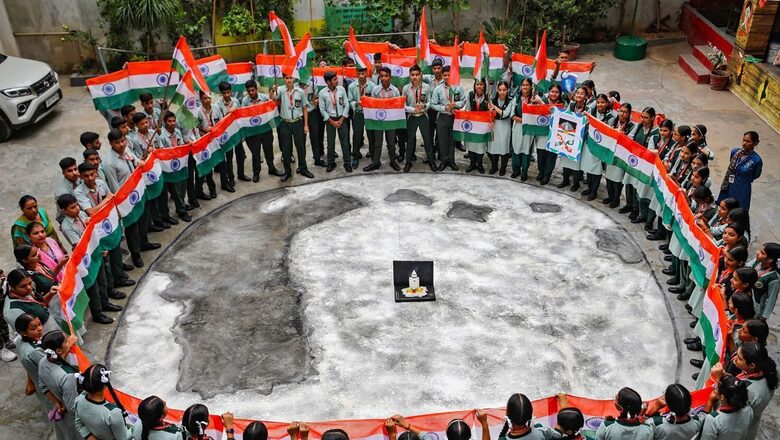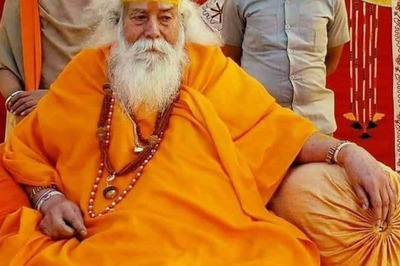
views
As Chandrayaan-3 touched down on Wednesday, Aakash Sinha, Founder and CEO of Omnipresent Robot Tech, which collaborated with the Indian Space Research Organisation (ISRO) to make the Pragyan rover, said the “latter will act as a primary data collector, move across the lunar surface, drill and collect samples”.
“The final output of the Chandrayaan mission is what the rover does there, and it is a very critical part. We hope to collect a lot of data from the moon. We hope to find a lot of water on the lunar south pole. Once the rover finds the water on the moon, there will be a new lunar race, and it will interest all major countries,” he said, speaking exclusively to News18.
“Chandrayaan-1 detected water, and this is important because despite the fact that in 50 years different moon missions have taken place, it was our mission which detected water.”
Sinha’s journey into lunar exploration stemmed from his background as a professor at Shiv Nadar University and his role as the CEO of Omnipresent Robot Tech. “While at the university, we had been doing a lot of research in robotics, and we also did a lot of research work on how artificial intelligence can be used on robots.”
His team ventured into building robots and drones. They were part of ISRO’s Chandrayaan-1 mission, which served as the precursor to their involvement in Chandrayaan-2 and now Chandrayaan-3. Sinha’s previous experiences at Lockheed Martin and iRobotics in the United States equipped him with insights to contribute to India’s space exploration journey.
Countdown begins for #LanderVikram's soft-landing on Moon's South Pole. Watch #LIVE visuals from #ISRO control room #Chandrayaan3 #Chandrayaan3Mission #MoonLanding #MoonLandingWithNews18 #PragyanRover #ISROMissions pic.twitter.com/jK2U1KcHDL— News18 (@CNNnews18) August 23, 2023
CHALLENGES IN ROVER DEVELOPMENT
The primary challenge faced by Sinha and his team was the development of perception software for the rover. This software plays a crucial role in guiding the rover’s movements and decision-making on the lunar surface.
They achieved this using inexpensive cameras as sensors. “Many space agencies such as NASA and others use 3D LiDAR and expensive sensors. We were not using any big expensive sensors, but only inexpensive two cameras to guide our way to move on the moon. These cameras function as the rover’s eyes and provide the essential data for its navigation.”
Furthermore, the lunar environment posed unique challenges. The moon’s surface exhibits sharp contrasts in brightness and darkness, making it difficult to generate 3D textures.
Additionally, he said: “We could not download images from the moon and process it here because downloading two images from the moon takes at least 10 minutes, it is not like our gigabyte internet connection that we have. So we have to do the processing on the moon itself. The rover will do the processing and it will be fully autonomous and it will plan its path there.”
COLLABORATION WITH ISRO
“We worked very closely with ISRO’s team, we worked at their facility for a long time. We operated out of their facility and we jointly worked with them to develop the rover.”
This collaborative effort demonstrates the synergy between private industry and government agencies in advancing space exploration.
Why is #Chandrayaan3Mission so important for India's space research? Take a look at this report@Zakka_Jacob | #Chandrayaan3 #Chandrayaan3Mission #MoonLanding #MoonLandingWithNews18 #PragyanRover #ISRO #ISROMissions #LanderVikram pic.twitter.com/IviqtBDJTt— News18 (@CNNnews18) August 23, 2023
IMPACT OF CHANDRAYAAN-3 MISSION
Sinha believes that Chandrayaan-3 has the potential to make groundbreaking contributions to lunar exploration. Beyond the scientific discoveries, he sees the mission as a catalyst for India’s technological and scientific credibility.
“The mission will build our credibility and bring in a lot of investments in technology sectors in India.”
Furthermore, the potential discovery of water on the moon could open up exciting possibilities for human colonization and the establishment of a space centre.


















Comments
0 comment